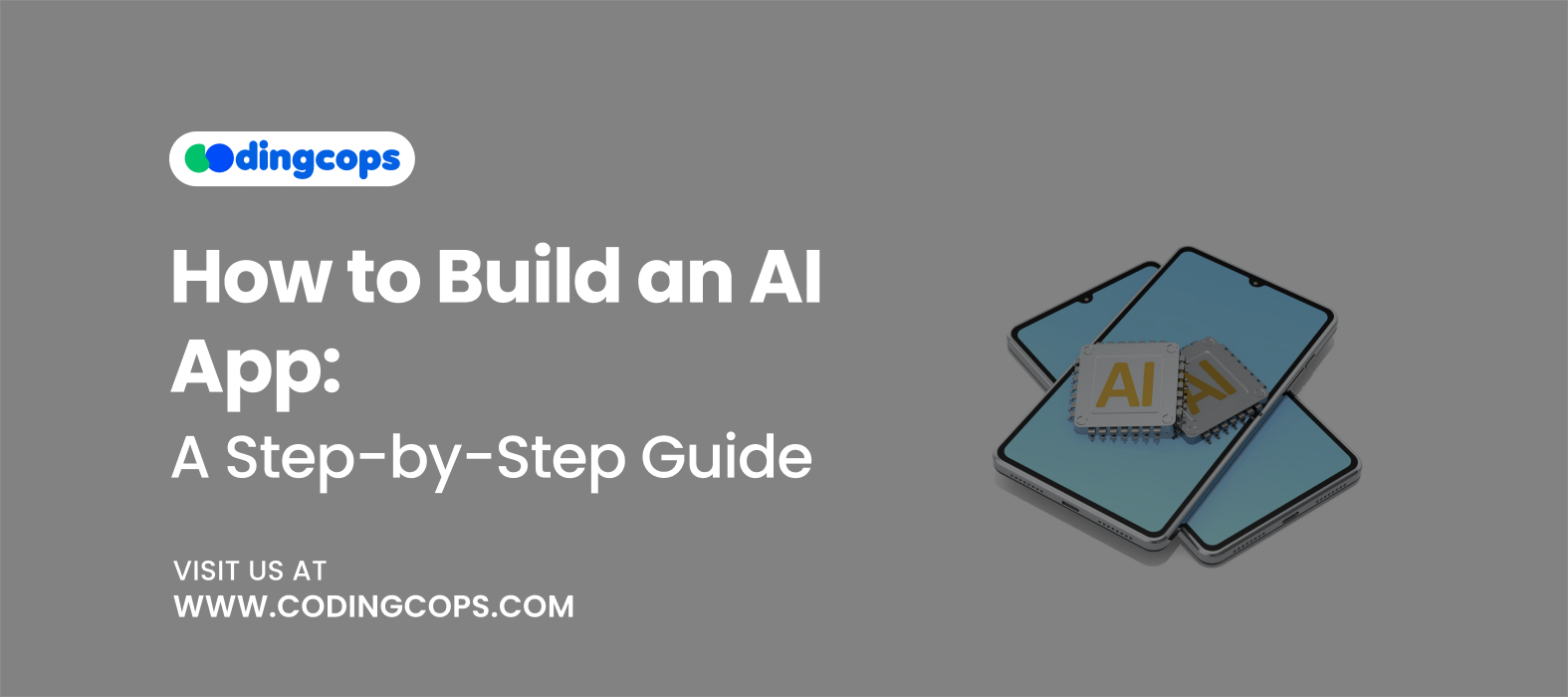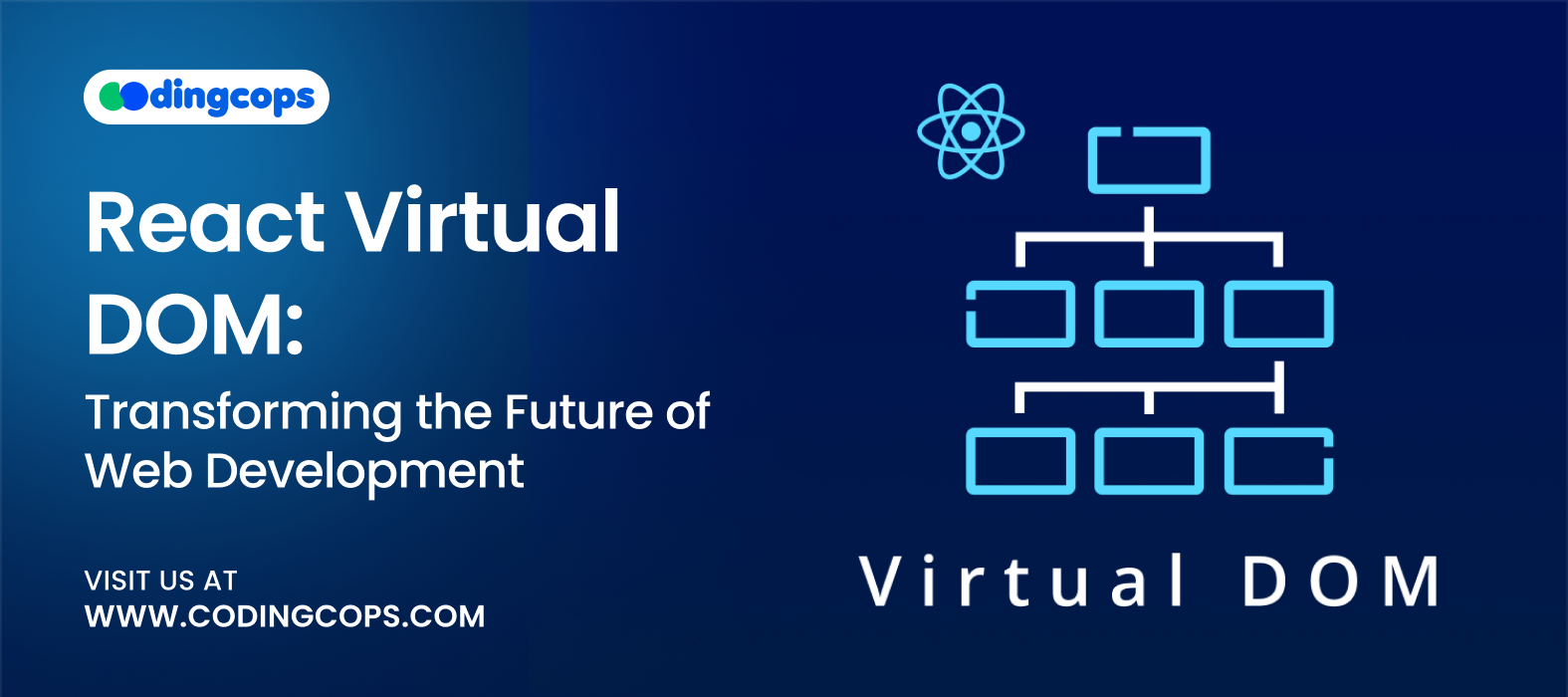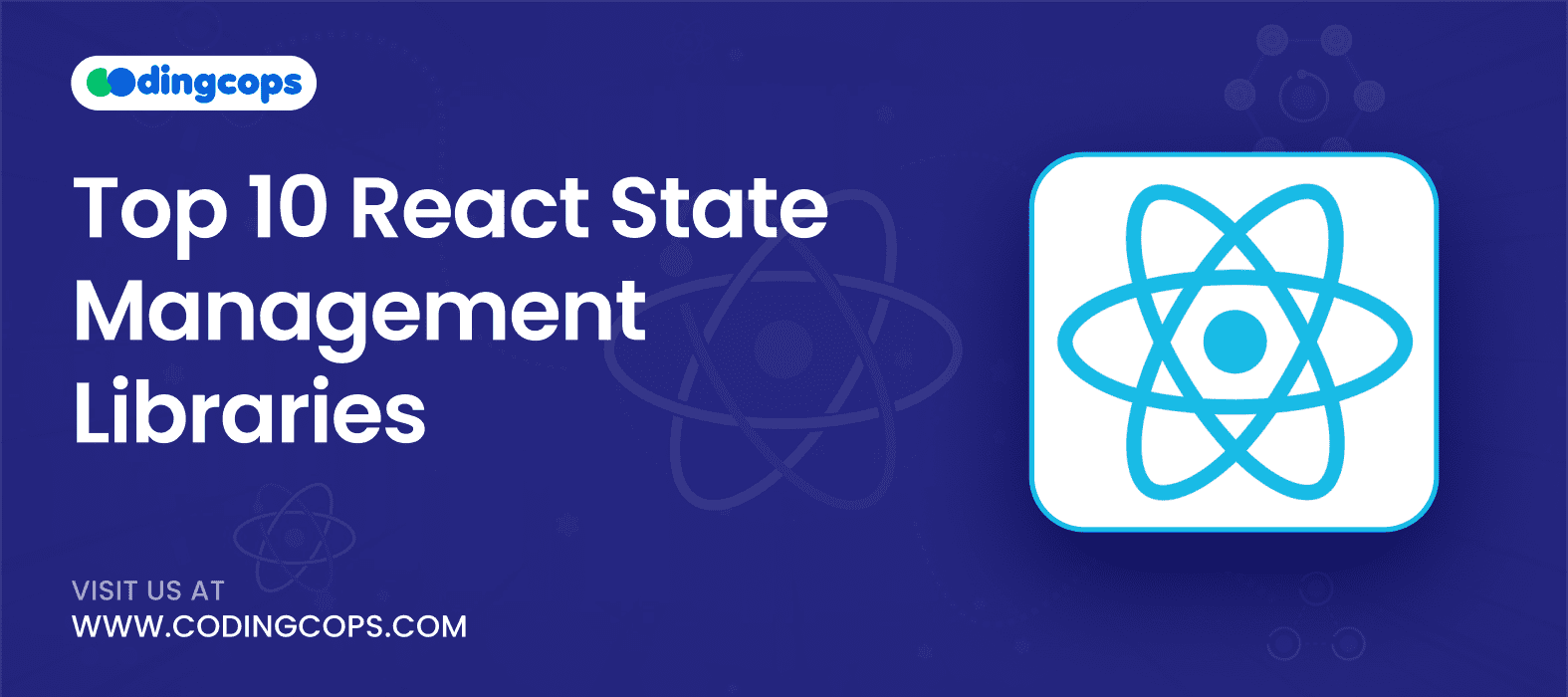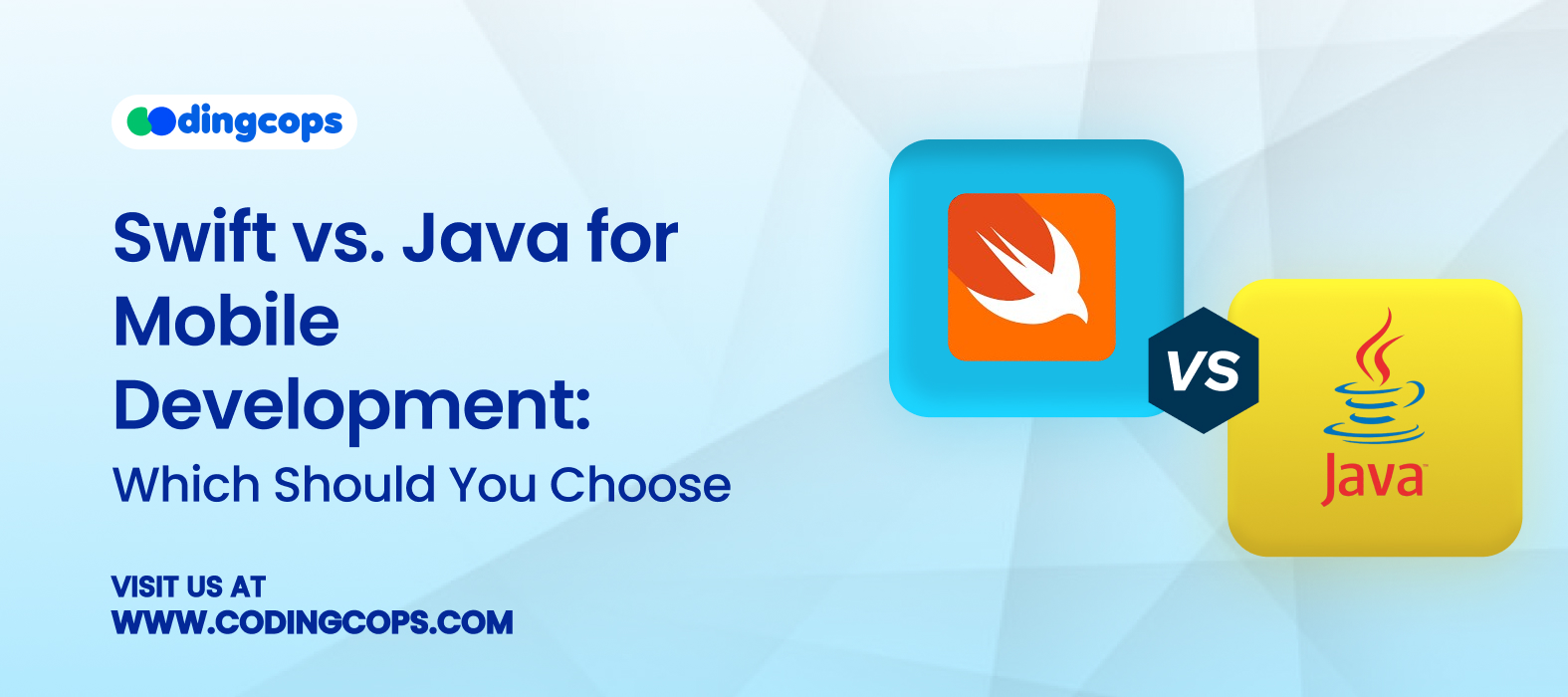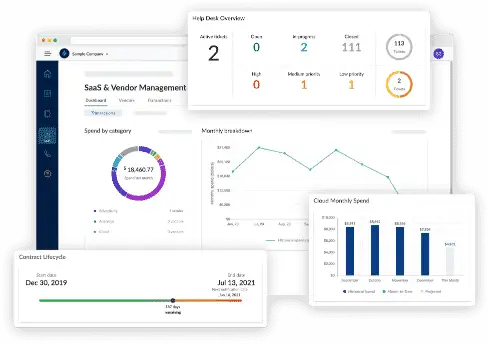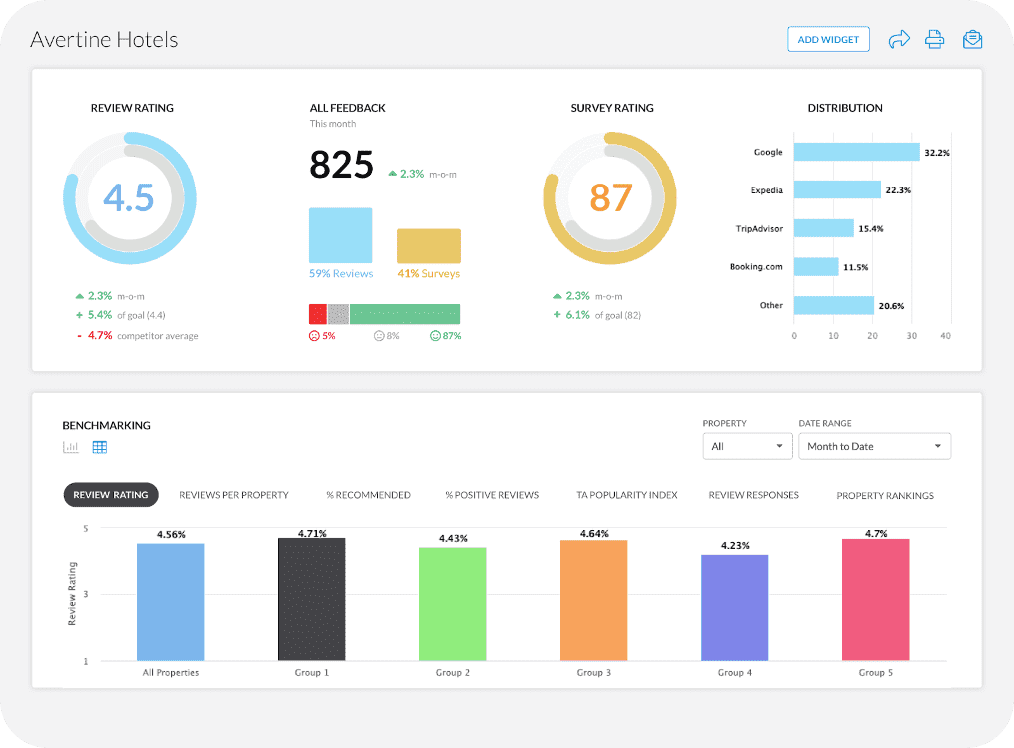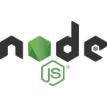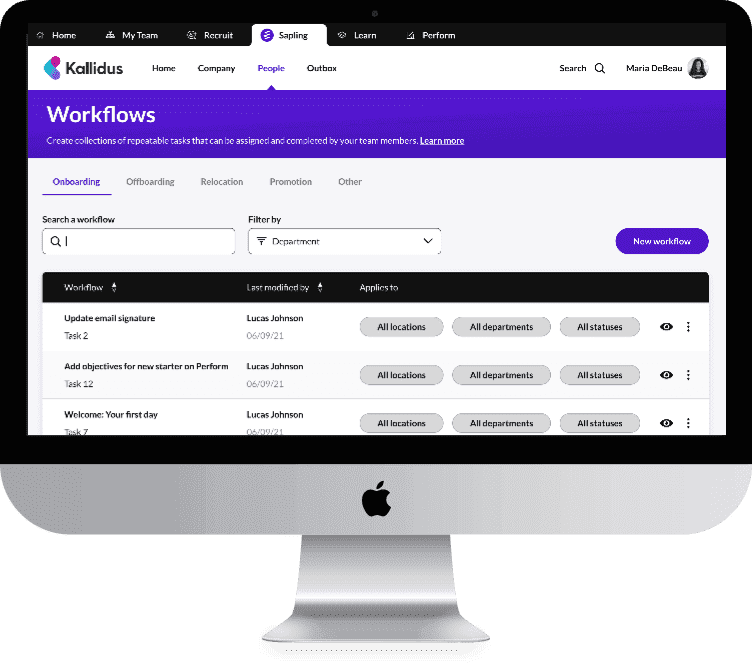According to Statista, the AI app market will reach $800 billion in the next five years. Moreover, Forbes Advisor reports that 97% of startup founders believe artificial intelligence would help their business. This is because AI applications are the future. AI is propelling innovation in many sectors, like chatbots.
But creating AI apps isn’t the same as creating a conventional app. It calls for a special fusion of product thinking and data science.
We will thus cover all the information you require to create a successful AI application in this guide. This includes understanding the right AI type for model training and beyond.
What is an AI Application?
A software program that uses AI techniques to simulate human cognitive processes like learning and pattern recognition is called an AI application. Furthermore, without requiring reprogramming, AI apps are capable of making judgments and even enhancing performance over time, in contrast to traditional programs that adhere to clearly stated instructions.
Furthermore, AI software uses data and algorithms to provide the impression that robots think and behave intelligently. These algorithms can analyze large volumes of data. Also, it can automate complex tasks that often need human intervention.
What are the Characteristics of AI Applications?
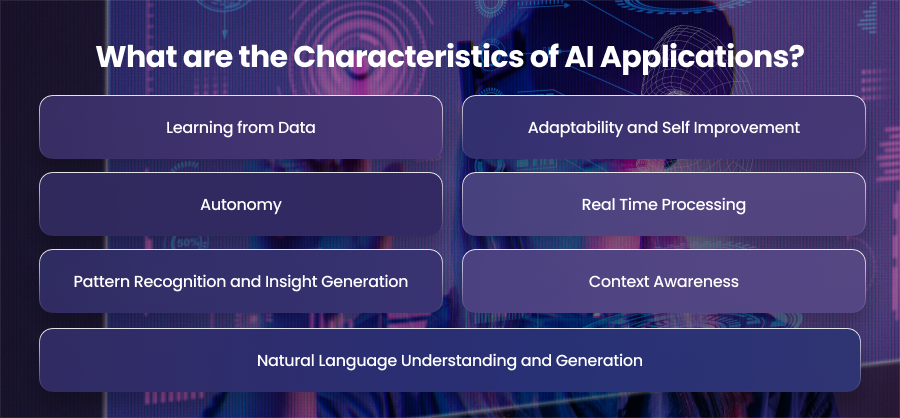
Learning from Data
AI apps discover patterns in data, as opposed to conventional apps that adhere to preset logic. AI models are trained on real time or historical information to find patterns and correlations that aid in decision making. Machine learning is the term used to describe this process.
For example, a language translation app improves over time by analyzing user corrections and large language corpora. Furthermore, it enables it to generate more accurate translations with continued use.
Adaptability and Self Improvement
AI applications are inherently adaptive. They can modify their behavior to increase accuracy and performance when they get new information or feedback. As a result, AI systems may remain relevant even when circumstances change thanks to this ongoing learning loop.
An excellent example is a recommendation engine that modifies suggestions according to user preferences instead of rigid restrictions.
Autonomy
AI applications can make independent decisions without human interventions, especially in well defined context. From simple automation to intricate decision-making, this autonomy can take many forms.
As a result, this feature enables companies to decrease manual labor and boost productivity, particularly in real time settings where precision and speed are essential.
Pattern Recognition and Insight Generation
The capacity of AI to identify subtle patterns in sizable and intricate datasets is one of its advantages. AI is excellent at finding patterns in network data or detecting faces in a crowd, among other tasks that humans can miss. As a result, AI is extremely useful in data intensive sectors like banking.
Natural Language Understanding and Generation
Many AI applications are equipped with Natural Language Processing capabilities that allow them to understand and generate human language. This includes chatbots and sentiment analysis tools.
This characteristic helps bridge the gap between human communication and machine understanding. This makes technology more accessible and user friendly.
Real Time Processing
AI applications usually operate in real time, relying on real time inputs to provide findings or make decisions quickly. Whether it’s a self driving car responding to a pedestrian, real time responsiveness is crucial to their effectiveness. This requires reliable infrastructure and efficient models to provide low latency performance.
Context Awareness
Many AI algorithms may generate more individualized outcomes by using contextual data, including user preferences. As a result, better judgments are made when situational awareness is raised. For example, a smart calendar software may recommend times for meetings depending on where you are right now.
How to Choose the Right Type of AI?
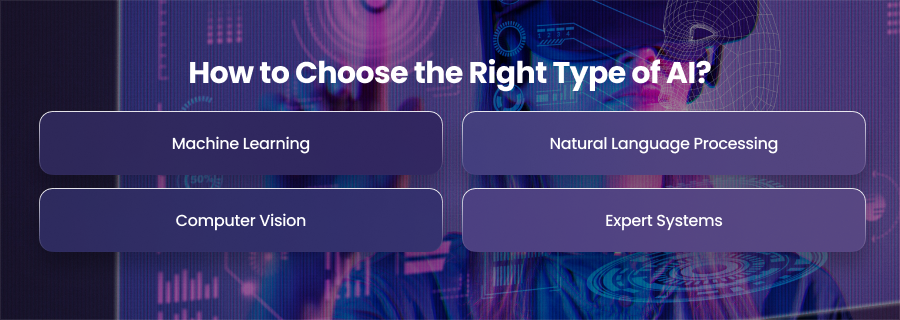
Machine Learning
Machine Learning is the most common form of AI and is ideal when your application needs to learn patterns from historical data to make future predictions. Furthermore, machine learning is applied in situations where a system might get better with time through increased data exposure. Additionally, it is very helpful for issues pertaining to anomaly identification and categorization. For example, an app predicting house prices would rely on machine learning.
Also, there are further sub types in machine learning. These include:
- Supervised Learning
- Unsupervised Learning
- Reinforcement Learning
Natural Language Processing
The goal of natural language processing, a branch of artificial intelligence, is to enable robots to understand and generate human language. NLP is also essential if your application calls for speech or text interaction. This includes virtual assistants and sentiment analysis technologies. Additionally, if you are creating an app that has to understand user questions, natural language processing is likely to be at the core of your AI stack. It also uses machine learning and linguistic techniques to handle both structured and unstructured data.
Computer Vision
Computer Vision is the AI discipline that deals with how machines see and interpret visual inputs like images and videos. Moreover, it is the right choice when your application involves tasks such as facial recognition and object detection. Moreover, common use cases include healthcare apps analyzing X rays and security systems using facial recognition. Additionally, computer vision applications often rely on convolutional neural networks for image processing. Furthermore, they require high quality labeled visual data for training.
Expert Systems
Expert systems are AI programs that mimic the decision making ability of a human expert using a set of rules derived from domain knowledge. Moreover, they are best suited for logic based decision making scenarios where rules can be explicitly defined, such as legal advisory apps or financial planning assistants. Furthermore, unlike machine learning models, expert systems don’t learn from data but rather follow predefined logical pathways. These are beneficial in regulated industries where explainability and traceability of decisions are important.
How to Build an AI App?
Collect and Prepare the Data
Data is critical for every AI system. Moreover, its foundation upon which your model will be trained and tested. Determining the type of data your AI application needs should be your first step. For example, Netflix provides recommendations to its users based on data about their usage.
The next step after determining your data needs is to collect the information from trustworthy sources. This could include open source datasets and public APIs. Moreover, you can even use custom data collected through web scraping. After data collection, you must clean and preprocess it. This involves removing duplicates and handling missing values. Also, you should normalize inputs and convert raw data into structured formats.
Furthermore, labeling the data, which may be done manually or with the aid of annotation tools like Label Studio is essential for supervised learning. The quality of your data will have a direct effect on how well your AI model performs.
Selecting the Right Tools
Programming Languages
Python is still the industry standard for creating AI and machine learning because of its vast library ecosystem. It also supports almost all of the major machine learning frameworks. It is therefore perfect for creating and evaluating models. Other languages, however, may also be pertinent based on your platform and use case.
JavaScript, for instance, is frequently utilized in web based applications, particularly when incorporating AI functionalities into user interfaces. Big data and corporate settings make extensive use of Java. Additionally, for iOS and Android mobile programming, Swift and Kotlin are recommended.
AI and ML Frameworks
The next step is to pick a framework for building your AI models. For deep learning applications, TensorFlow and PyTorch are the most popular options. TensorFlow provides extensive support for production grade deployment and works well TensorFlow Lite for mobile inference. Additionally, PyTorch’s dynamic computational network and user friendly syntax make it a popular choice for study and development.
Scikit Learn provides a straightforward yet effective collection of tools for common machine learning tasks like regression or classification. Furthermore, if you are working on NLP libraries like spaCy and especially Hugging Face Transformers provide access to language models like GPT.
Cloud Platforms for Deployment
AI model training often requires significant computing power. Therefore, cloud platforms are the best option. Amazon Web Services offer services like SageMaker for building and deploying machine learning models at scale. Google Cloud Platform provides Vertex AI, a fully managed ML platform that integrates well with TensorFlow.
Microsoft Azure offers Azure Machine Learning, suitable for both beginner friendly AutoML and advanced custom models. These platforms also support robust APIs and scalability options for production workloads.
Building and Training the AI Model
Model Architecture
Different algorithms are needed for different situations, and selecting the best one requires a combination of expertise and task complexity. Algorithms such as logistic regression and gradient boosting machines are frequently used for conventional machine learning issues. Recurrent neural networks and transformers are examples of deep learning models that are frequently used for more complicated tasks like image recognition and natural language interpretation.
In some cases, pre trained models offer a head start. For example, ResNet for vision tasks or BERT can be fine tuned on your specific dataset instead of being built from scratch.
Split the Dataset
Data splitting is essential to creating a well generalizing model. A training set, a validation set, and a test set are the three sections into which the dataset is usually separated. The model is trained using the training set. Next, the validation set helps tune hyperparameters. Moreover, the test set provides a final and unbiased evaluation of performance. Without this split, there’s a high risk of overfitting, where the model performs well on training data but poorly on real world inputs. Also, proper data separation ensures your AI systems can make reliable predictions when deployed.
The next step is to train the model. You should feed the training data into your algorithm so that it can learn patterns and relationships.
Integrate the AI Model into Your App
Integrating your AI model into your app is the next stage. This may be accomplished by making the model available as an API endpoint. Additionally, frameworks like Flask or FastAPI are great for developing RESTful APIs that are lightweight and support the predictions of your model. Your application may provide data to this endpoint and get real time AI replies after the model is wrapped in an API. The backend API, for instance, can receive user input from a frontend application, process it through the model, and then deliver the outcome.
Design the User Interface
A successful AI app isn’t just about complex models, it also needs to provide a seamless and intuitive user experience. The user interface should clearly present AI outputs in a way that adds value.
Make it easy for users to provide feedback if your software allows for customization or ideas, since this may be used to retrain the model. Additionally, you can quickly construct responsive interfaces by utilizing frontend development tools like React. Also, you can use design platforms like Figma to prototype AI interactions before development begins.
Test the AI App
Verifying sure the model behaves as intended is part of testing an AI application. While model testing assesses how effectively your AI system operates on unseen data, functional testing guarantees that your app functions as intended.
You can conduct unit tests on model functions. Also, you can conduct integration tests to ensure frontend and backend communication works. Moreover, you can conduct end to end testing to simulate actual end user workflows. AI specific testing also includes performance validation using test datasets and conducting A/B tests to compare different versions of the model or interface.
Deploy the AI App
Your application is prepared for deployment when testing is finished. In order to do this, the frontend and backend must be moved to a live environment where people may engage with them. You can install and maintain your AI models at scale with the aid of cloud platform services like Amazon SageMaker.
After deployment, make sure to monitor your AI model for data drift or issues with performance. Maintaining your model’s accuracy as fresh data becomes available will need frequent retraining.
Final Words
Developing AI software involves more than just training a model; clean data is also required. From choosing the kind of AI to deploying it, each step is vital. With a strategic approach, you can create intelligent and impact AI applications that truly serve users.

